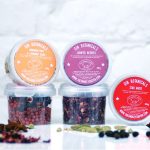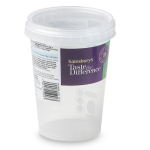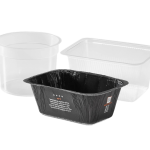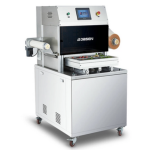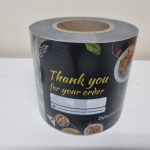Bagasse packaging is a type of eco-friendly packaging made from sugarcane pulp. Sugarcane is an abundant natural resource in countries such as Brazil, India, China, and Thailand, and the leftover pulp from sugar extraction is called bagasse. This waste product has been repurposed into a variety of applications, including packaging, and has gained popularity as a sustainable alternative to traditional packaging materials like plastic and paper.
Bagasse packaging is composed of 100% natural materials and is completely biodegradable and compostable. This makes it an excellent choice for environmentally conscious consumers who want to reduce their carbon footprint. Unlike plastic, which takes hundreds of years to decompose, bagasse packaging breaks down in a matter of weeks, leaving no harmful residue behind. It is also resistant to grease and moisture, making it ideal for food packaging.
One of the main advantages of bagasse packaging is that it reduces the amount of waste that ends up in landfills. According to the Environmental Protection Agency, landfills are the third-largest source of methane emissions in the United States, contributing to global warming and climate change. By using bagasse packaging, consumers can help reduce the amount of organic waste in landfills, which in turn reduces methane emissions and helps combat climate change.
Bagasse packaging is also cost-effective and easy to produce. Sugarcane is a renewable resource that grows quickly and abundantly, and the leftover pulp is often considered a waste product. By repurposing this waste, manufacturers can reduce their production costs and create a sustainable product that is in high demand. Bagasse packaging can be produced in a variety of shapes and sizes, making it suitable for a wide range of products, from food to electronics.
Another advantage of bagasse packaging is that it is lightweight and durable. Unlike paper or cardboard, which can tear or become damaged easily, bagasse packaging is sturdy enough to protect its contents while also being easy to transport. This makes it an excellent choice for shipping and storage, as it reduces the risk of damage to the product.
In addition to its environmental benefits, bagasse packaging is also aesthetically pleasing. It has a natural and rustic appearance that appeals to consumers who are looking for eco-friendly alternatives to traditional packaging. It can also be customized with logos or designs, making it an excellent choice for businesses that want to promote their brand while also being environmentally conscious.
Despite its many advantages, bagasse packaging does have some limitations. It is not suitable for products that require airtight packaging, as it is not completely waterproof. It also has a limited shelf life and can begin to break down if exposed to moisture for extended periods of time. However, these limitations are outweighed by its many benefits, and as technology continues to improve, it is likely that these limitations will be addressed in the future.
In conclusion, bagasse packaging is a sustainable, eco-friendly, and cost-effective alternative to traditional packaging materials. It reduces waste, helps combat climate change, and is aesthetically pleasing, making it an excellent choice for environmentally conscious consumers and businesses alike. As more people become aware of the environmental impact of traditional packaging materials, it is likely that bagasse packaging will continue to grow in popularity as a sustainable solution to the world’s packaging needs.

